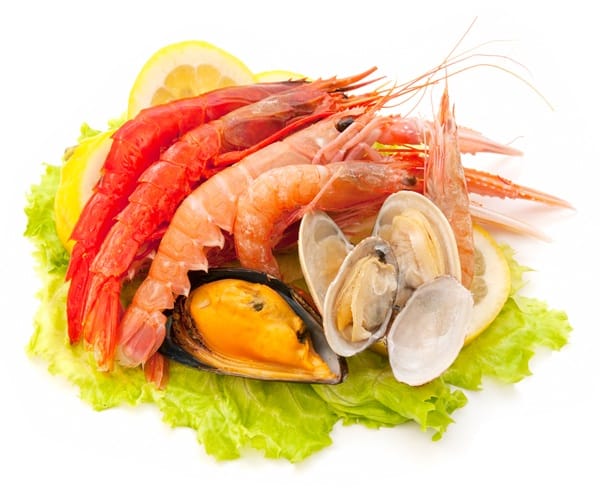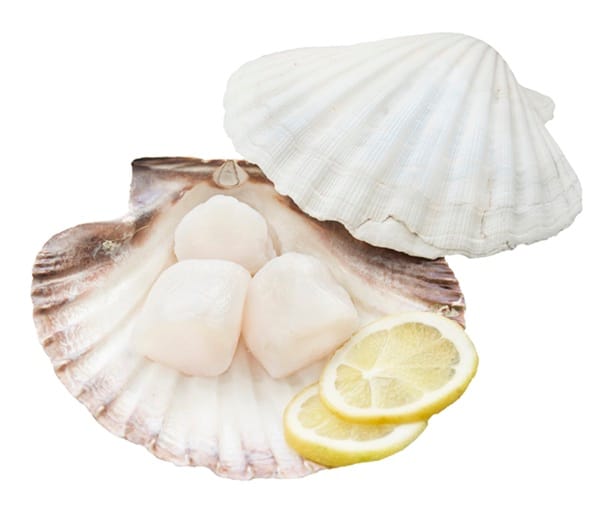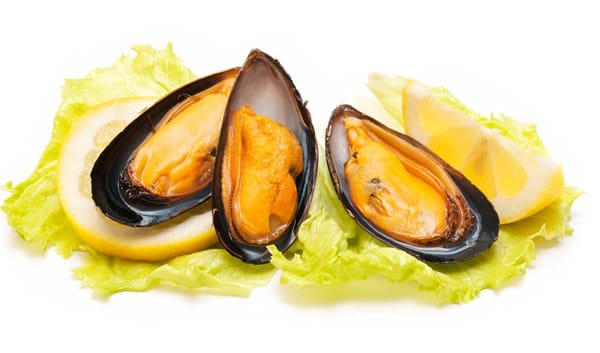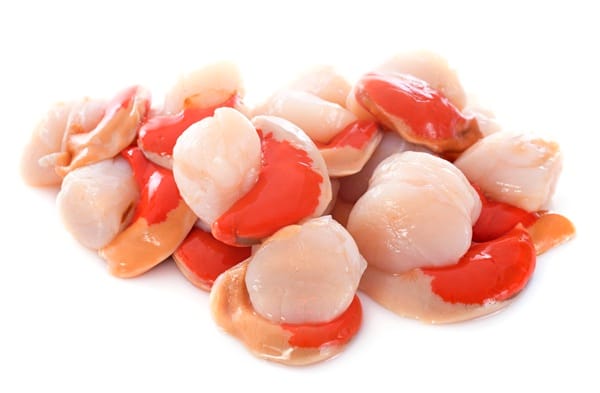Table of Contents
Shellfish and their related marine cousins—crustaceans, mollusks, sea urchins, and barnacles—are some of the most treasured delicacies of the ocean, offering a rich variety of flavors, textures, and culinary uses. Shellfish is a broad term that includes both crustaceans (like crabs, lobsters, shrimp, and prawns) and mollusks (such as clams, mussels, oysters, and squid). Crustaceans are known for their sweet, firm flesh, often enjoyed steamed, grilled, or incorporated into soups and curries. Mollusks, on the other hand, bring tender textures and briny flavors to dishes, from raw oysters to stir-fried calamari.
Beyond these categories are unique marine species like sea urchins, prized for their vibrant, creamy roe (uni) in high-end cuisine, particularly sushi, and barnacles, which, though less common, are delicacies in certain coastal regions like Spain. These marine creatures are harvested from the wild or farmed through aquaculture, contributing to both local economies and global seafood markets.
Rich in proteins, omega-3 fatty acids, and minerals like zinc and iron, these ocean treasures not only elevate culinary experiences but also offer health benefits. Whether served raw, grilled, fried, or baked, their versatility ensures a cherished place in cuisines worldwide. Let me know if you'd like to explore any specific shellfish or its uses further! 🦞🌊🦐
Seafood encompasses a diverse array of marine creatures, each with unique characteristics and uses. Shellfish is a broad term covering all aquatic species with shells, including crustaceans (e.g., crabs, lobsters, and shrimp) and mollusks (e.g., clams, oysters, squid, and octopuses).
Crustaceans are prized for their sweet, firm meat and are commonly grilled, boiled, or added to stews and curries.
Mollusks, like mussels and scallops, are renowned for their tender texture and are often steamed, baked, or served raw in dishes such as sashimi.
Sea urchins, known for their vibrant roe (uni), are delicacies in sushi and high-end cuisine.
Barnacles, though less common, are enjoyed in coastal cuisines, particularly in Spain, where they’re boiled and served with sea salt. These seafood items are often cultivated through aquaculture; for instance, oysters and mussels are farmed in nets or cages, while shrimp are grown in ponds under controlled conditions. Sustainable practices in seafood farming are critical to maintaining marine ecosystems while ensuring a steady supply of these sought-after delicacies.
List of shellfish varieties, categorized by type (crustaceans, mollusks, and others), with brief descriptions, uses, and cultivation methods:

CRUSTACEANS
- Shrimp/Prawns
- Description: Small, curved bodies with ten legs; prawns are larger with a slight anatomical difference (e.g., tiger prawns, whiteleg shrimp).
- Uses: Grilled, fried, curries, sushi, soups.
- Cultivation: Farmed in ponds (Asia, Latin America) or offshore cages; requires warm water (25–30°C).
- Crabs
- Varieties:
- Blue Crab: Atlantic Coast, sweet meat.
- Dungeness Crab: Pacific Northwest, delicate flavor.
- Snow/King Crab: Cold waters, prized for legs.
- Mud Crab: Farmed in Asia.
- Uses: Boiled, steamed, crab cakes, bisques.
- Cultivation: Mostly wild-caught; limited farming (mud crabs).
- Varieties:

- Lobsters
- Varieties:
- American/European Lobster: Clawed, cold-water species.
- Spiny/Rock Lobster: Warm waters, tail meat only.
- Uses: Steamed, grilled, bisques, Thermidor.
- Cultivation: Wild-caught via traps; experimental offshore farming.
- Varieties:
- Crayfish
- Description: Freshwater crustaceans resembling small lobsters.
- Uses: Boils, étouffée, salads.
- Cultivation: Farmed in ponds (USA, China, Australia).
BIVALVES (MOLLUSKS)
- Clams
- Varieties:
- Hard Clam (Quahog): North Atlantic; includes sizes like Littleneck (small) and Cherrystone (medium).
- Soft-Shell Clam (Mya arenaria): East Coast; delicate, "steamers."
- Manila Clam: Farmed in Asia; small and sweet.
- Geoduck: Pacific Northwest; massive siphon, raw or stir-fried.
- Uses: Chowders, steamed, fried, pasta.
- Cultivation: Bottom culture (seabed) or rack-and-bag systems.
- Varieties:

- Oysters
- Varieties:
- Pacific/Eastern Oyster: Common in aquaculture.
- European Flat (Belon): Metallic, mineral-rich.
- Sydney Rock: Creamy, umami-rich.
- Uses: Raw (sushi), grilled, Rockefeller, stews.
- Cultivation: Rack-and-bag farming; thrive in estuaries (10–25°C).
- Varieties:
- Mussels
- Varieties:
- Blue Mussel: North Atlantic; dark shells.
- Green-Lipped Mussel: New Zealand; jade edges.
- Uses: Steamed, curries, soups, smoked.
- Cultivation: Rope farming in coastal zones.
- Varieties:
- Scallops
- Varieties:
- Bay Scallop: Small, sweet.
- Sea Scallop: Larger, meaty adductor muscle.
- Uses: Seared, grilled, ceviche, sushi.
- Cultivation: Suspended nets or seabed dredging (wild).
- Varieties:

- Cockles
- Description: Small, heart-shaped shells; sweet meat.
- Uses: Paella, steamed, canned.
- Cultivation: Hand-harvested in intertidal zones (Europe, Asia).
GASTROPODS (MOLLUSKS)
- Abalone (Haliotis spp.)
- Description: Ear-shaped shell; prized tender meat.
- Uses: Sashimi, steamed, stir-fried.
- Cultivation: Farmed in tanks (China, Australia).
- Conch
- Description: Large spiral shell; firm meat.
- Uses: Fritters, salads, chowders.
- Cultivation: Wild-harvested (Caribbean, Florida).
- Whelks
- Description: Large marine snails; chewy texture.
- Uses: Stir-fries, soups, pickled.
- Cultivation: Mostly wild-caught.
CEPHALOPODS (MOLLUSKS)
- Octopus
- Uses: Grilled, stews, sushi (tako).
- Cultivation: Limited farming; primarily wild-caught.
- Squid/Calamari
- Description: Tubular body with tentacles; "calamari" refers to cooked dishes.
- Uses: Fried calamari, grilled, stuffed.
- Cultivation: Mostly wild-caught; experimental farming in Asia.
- Cuttlefish
- Uses: Grilled, in risotto, ink for pasta.
- Cultivation: Wild-harvested (Mediterranean, Asia).
OTHER SHELLFISH
- Sea Urchins
- Description: Spiny echinoderms with edible roe (uni).
- Uses: Sushi, pasta, sauces.
- Cultivation: Ranching (Japan, Chile); wild-harvested.
- Barnacles
- Description: Crustaceans attached to rocks/ships.
- Uses: Boiled, seafood stews (Spain’s percebes).
- Cultivation: Wild-harvested; dangerous to collect.
KEY CULTIVATION METHODS
- Aquaculture:
- Pond/Raceway Systems: For shrimp, crayfish.
- Rope/Bag Farming: Mussels, oysters.
- Offshore Cages: Lobsters, fish.
- Wild Capture:
- Traps/Pots: Crabs, lobsters.
- Dredging: Clams, scallops.
- Handpicking: Mussels, cockles.
- Prawns vs. Shrimp: Prawns are larger with branching gills, while shrimp have plate-like gills.
- Hard vs. Soft-Shell Clams: Hard clams (e.g., Quahog) have thick shells; soft-shell clams (Mya arenaria) have brittle shells and are used for "steamers."
- Littleneck Clams: A small size category of hard clams, ideal for raw or steamed dishes.
USES OF SHELLS/BYPRODUCTS
- Shells: Crushed for calcium carbonate (fertilizers, supplements).
- Pearls: From oysters (Pteriidae family).
- Fishmeal: From processing waste for animal feed.
SUSTAINABILITY NOTES
- Certifications: Look for MSC/ASC labels.
- Risks: Overfishing, habitat loss (e.g., mangrove destruction for shrimp farms).
This list covers major edible shellfish, their roles in cuisine, and how they’re sourced or farmed. 🦐🐚









